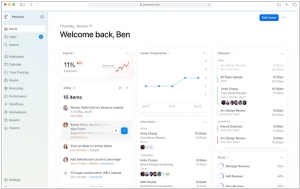JIRA vs Mantis
March 07, 2025 | Author: Michael Stromann
82★
JIRA provides issue tracking and project tracking for software development teams to improve code quality and the speed of development. Combining a clean, fast interface for capturing and organising issues with customisable workflows, OpenSocial dashboards and a pluggable integration framework, JIRA is the perfect fit at the centre of your development team.
4★
MantisBT is a free popular web-based bugtracking system (feature list). It is written in the PHP scripting language and works with MySQL, MS SQL, and PostgreSQL databases and a webserver. MantisBT has been installed on Windows, Linux, Mac OS, OS/2, and others. Almost any web browser should be able to function as a client. It is released under the terms of the GNU General Public License (GPL).
See also:
Top 10 Issue-tracking systems
Top 10 Issue-tracking systems
Both JIRA and Mantis, in a most bewildering yet admirable fashion, are tools designed to help you track your bugs, tasks and issues as though you were navigating the vast unknowns of an intergalactic space journey. They both allow you to assign, manage and report on problems with the sort of precision you would expect from a well-programmed spaceship and they even give you the power to customize your workflows, should you ever need to make one of your own. They also have user roles to make sure that only the appropriately designated space cadet can access certain areas of the ship—presumably to prevent someone from launching the escape pod prematurely.
Now, if you choose JIRA, prepare yourself for a more complex, feature-heavy experience. It’s built with agile teams in mind, especially those who live their lives in the fast-moving world of Scrum and Kanban, as though speed were the only thing that mattered. Atlassian, based in Australia, launched this behemoth in 2002 and while it offers a free tier, you’ll find yourself paying for the privilege of using its many bells and whistles, not to mention navigating its labyrinthine interface. With a marketplace full of integrations, it’s the sort of tool you need a PhD to master, but once you do, the stars themselves may align for your team.
On the other hand, Mantis is the charmingly more laid-back cousin in this family of tools. Originating in 2000 from the United States, Mantis is as straightforward as an interplanetary shuttle ride—simple, functional and not at all bothered by any complexity. Free and open-source, it’s a bit like an old, well-worn spaceship that’s been lovingly maintained by its crew, offering customization options through community-driven plugins. While it lacks the bells and whistles of JIRA, it more than makes up for it with a user-friendly interface and the kind of ease that lets you get right to the problem-solving, without worrying about whether or not you’ve configured your settings in the proper order.
See also: Top 10 Issue Trackers
Now, if you choose JIRA, prepare yourself for a more complex, feature-heavy experience. It’s built with agile teams in mind, especially those who live their lives in the fast-moving world of Scrum and Kanban, as though speed were the only thing that mattered. Atlassian, based in Australia, launched this behemoth in 2002 and while it offers a free tier, you’ll find yourself paying for the privilege of using its many bells and whistles, not to mention navigating its labyrinthine interface. With a marketplace full of integrations, it’s the sort of tool you need a PhD to master, but once you do, the stars themselves may align for your team.
On the other hand, Mantis is the charmingly more laid-back cousin in this family of tools. Originating in 2000 from the United States, Mantis is as straightforward as an interplanetary shuttle ride—simple, functional and not at all bothered by any complexity. Free and open-source, it’s a bit like an old, well-worn spaceship that’s been lovingly maintained by its crew, offering customization options through community-driven plugins. While it lacks the bells and whistles of JIRA, it more than makes up for it with a user-friendly interface and the kind of ease that lets you get right to the problem-solving, without worrying about whether or not you’ve configured your settings in the proper order.
See also: Top 10 Issue Trackers





